Tristan Brown has been coming to Disneyland most of her life. It was a place she’d go to celebrate feeling good, and to feel better when she was down.
So it’s been a tough year for her and other Disney aficionados, who’ve watched the happiest place on earth shutter its rides and hang up its costumes as the pandemic ground life to a halt.
“Disneyland is this barometer for how the world is doing for me,” said Brown, 42. “It was just so hard to grasp that the pandemic would be so all-encompassing that it even touched Disneyland.”
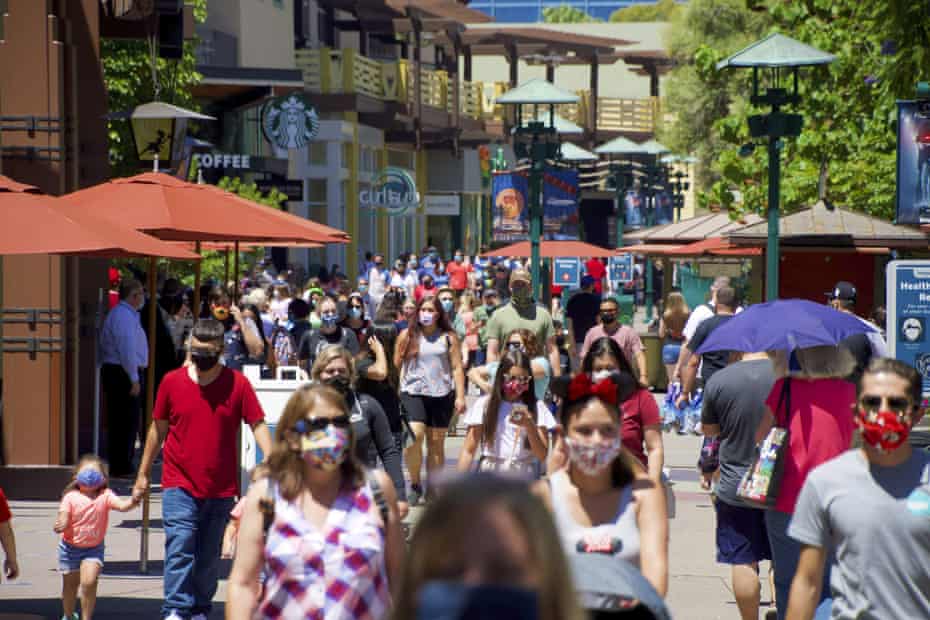
Disneyland is reopening its gates this week after more than 12 months shut, fuelling hope of an escape from a dark year marked by lockdowns and overflowing ICUs, especially in the hard hit nearby Los Angeles area.
The park will officially reopen on 30 April, and anticipation is already running high. Fans have waited for hours to secure an online reservation. Tens of thousands of visitors have flooded the Downtown Disney shops and food stalls just outside the park’s gates since they opened over the summer.
But not everything will be back to normal just yet. Capacity will be limited to 25%, and tickets are only available for California residents. Masks and social distancing will be required, and parades, fireworks, and hugs will be banned. There were even reports that screaming would be outlawed, forcing a state trade organization to clarify that shrieks are welcome.
The closure has also been tough for the park’s staff, many of whom have been on furlough since last April.
“Thank god for unemployment,” said Tim Bachman, 52, a retail worker at Disneyland for 15 years.
Bachman and his furloughed colleagues have made do with unemployment and continued insurance coverage from Disney. Other workers were laid off in November, losing their insurance and the promise of a job once the park reopened.
Some others are already back to work. The Downtown Disney shops have attracted fans anxious to get as close to the theme park as they possibly can.
On a recent sunny Saturday afternoon, a line of several hundred people snaked through a parking lot and down a Disney-ified boulevard shaded with trees. One security guard estimated that he’s seen 30,000 to 40,000 visitors a day come through the entrance where he’s stationed.
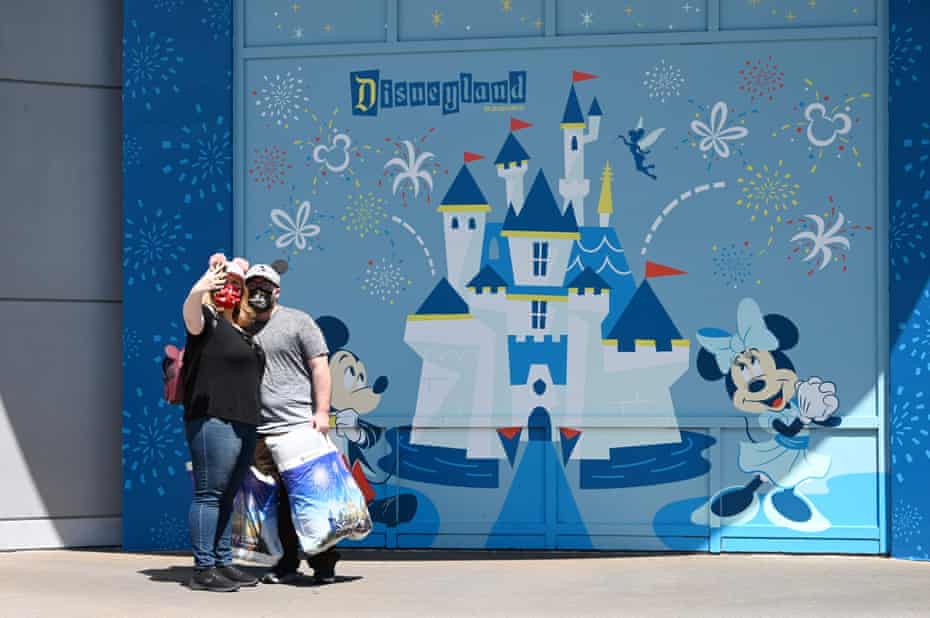
Downtown Disney is essentially an outdoor mall with Disney trappings. After passing a temperature check, visitors can enjoy Disney-themed music pumped out through speakers that sit at the top of each lamp-post, while vendors sell $10 corn dogs and $7 churros outside shops such as Starbucks, Sephora and the Sunglass Hut.
The line at the World of Disney gift shop stretched 80-people long at one point, with visitors waiting patiently on stickers placed six feet apart, many wearing their own Disney paraphernalia as they waited to buy more – Mickey ears and bubble blowers, face masks with Disney characters on them, T-shirts with all manner of Disney slogans and logos.
Despite the lines, one vendor described it as a “slow day”, saying that earlier this month, there was a three-hour wait just to get into the shopping center.
Turning Anaheim into a ‘ghost town’
Even with all the Disney fans who have made the pilgrimage to Downtown Disney, Anaheim shops and restaurants outside the park have seen a fraction of the business that they did when Disneyland was open. Disney has long loomed large in Anaheim, exerting influence over local municipal decisions and serving as the largest employer in the county.
The park’s closure turned Anaheim into “a ghost town”, said Jim West, the general manager of a restaurant across the street from Disneyland.
“It’s been horrendous,” he said. “There’s no traffic because there’s no people.”
West said his cafe has seen about 100 customers a day during the week, compared with what would’ve been 1,000 or more before the pandemic. And he’s not expecting everything will go back to normal even when Disneyland does reopen, given the reduced capacity and other limits on ticket sales.
“I talked to the hotel behind us, and they’re not even opening until May 5th,” he said. “Until the hotels open and capacity grows, it’s gonna be a gradual road.”
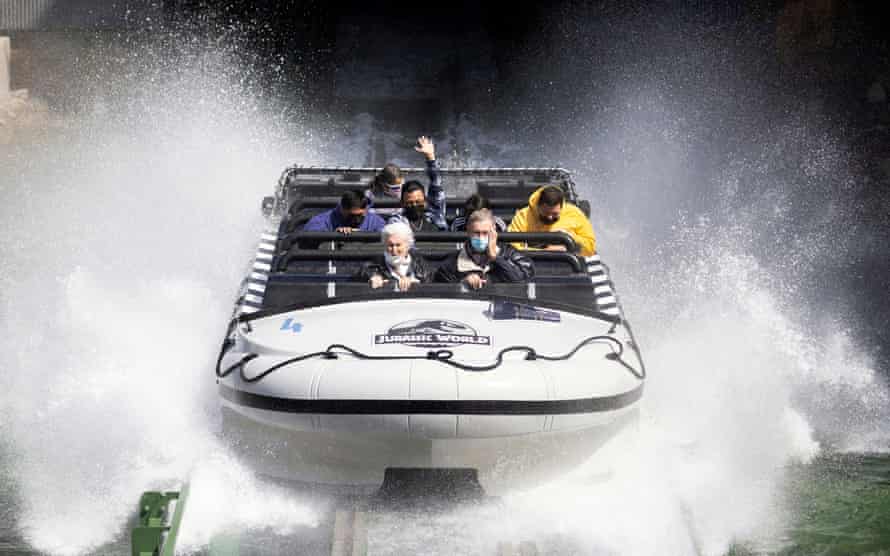
Disneyland is not the only California theme park coming back to life: Six Flags, Universal Studios, and other parks opened earlier this month. In March, the state issued guidelines for reopening, including limited capacity, mask mandates, and regular testing for employees.
The reopening plans have not been without controversy. The park was originally slated to reopen in July but met resistance as case numbers rose. At that time, 11 unions representing 17,000 park employees released an open letter to California’s governor Gavin Newsom, ringing the alarm. “The Covid-19 pandemic is the greatest challenge our unions and mem
bers have ever faced,” they wrote. “We are not yet satisfied that it is safe to reopen the resort.”
Disney World, the company’s Florida theme park, did reopen last summer, and has remained open despite a number of incidents with visitors to the park, including one patron who was arrested after spitting in a security guard’s face when he was asked to put on a mask.
In California, the theme park remained shut as Downtown Disney reopened, with workers offered returns to their jobs in order of seniority.
Returning to work in a pandemic is a big risk to take, especially for workers who are paid notoriously low wages in one of the most expensive counties in the state. Bachman makes $15 an hour, just a dollar more than the state-wide minimum wage for employers of Disney’s size.
Bachman got his offer to work at Downtown Disney in October – and declined, “because at that time there were no safety protocols”, he said.
But for the theme park’s April reopening, the safety measures implemented by Disney are satisfactory, says Andrea Zinder, the president of UFCW local 324, one of the unions with members working in the park.
“Complete mask enforcement. Crowd control. Limited capacity. I’m sure they’ve put in social distancing markers,” Zinder said. “I think they’ve been good in terms of sanitizing and hand washing. They’ve put up a lot of stations around the parks.”
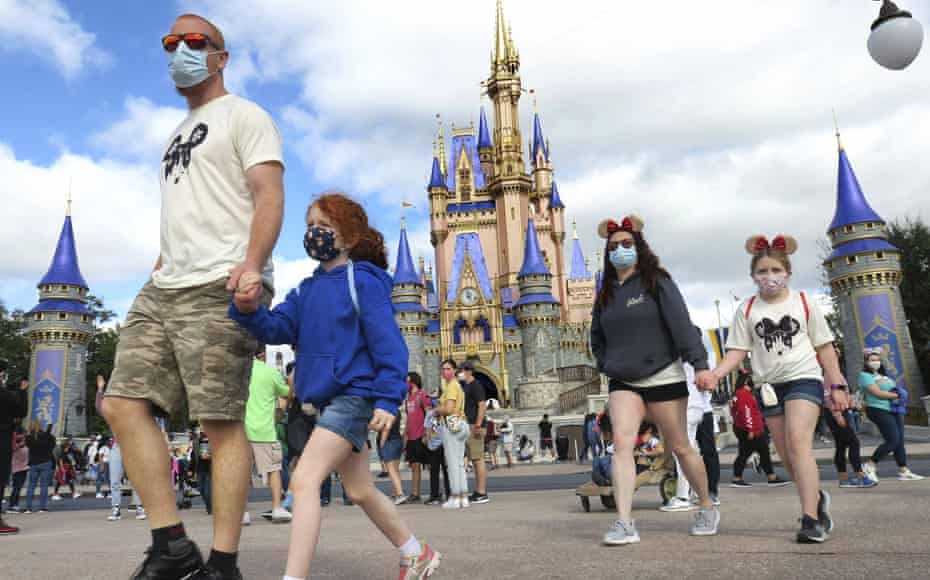
Disneyland, but without the ‘magic’?
Bachman will be returning to his post this month, along with thousands of his colleagues. Any concerns he might have had about going back are assuaged by the safety measures – as well as the fact that he will be fully immunized by 30 April.
But Disneyland workers were not prioritized in California’s multi-tier system of vaccine allocation, which means many employees will not be fully immunized by next week.
And even immunized staffers and fans – like Bachman and Brown – are steeling themselves for a masked, socially distanced Disney experience. There are a lot of things that go into making Disneyland “the happiest place on earth” that just won’t be possible in a pandemic.
Brown rattled off a list.
“The fireworks, for example. They’re a huge part of Disneyland culture … it was always this bittersweet, last hurrah of the night,” Brown said.
“The parades are a huge thing to me. I love to sit on the curb and wave at everything as it goes by, it’s so silly and childish, but you can’t do that at the grocery store. Be like ‘Hey!’ and have someone wave back to you.”
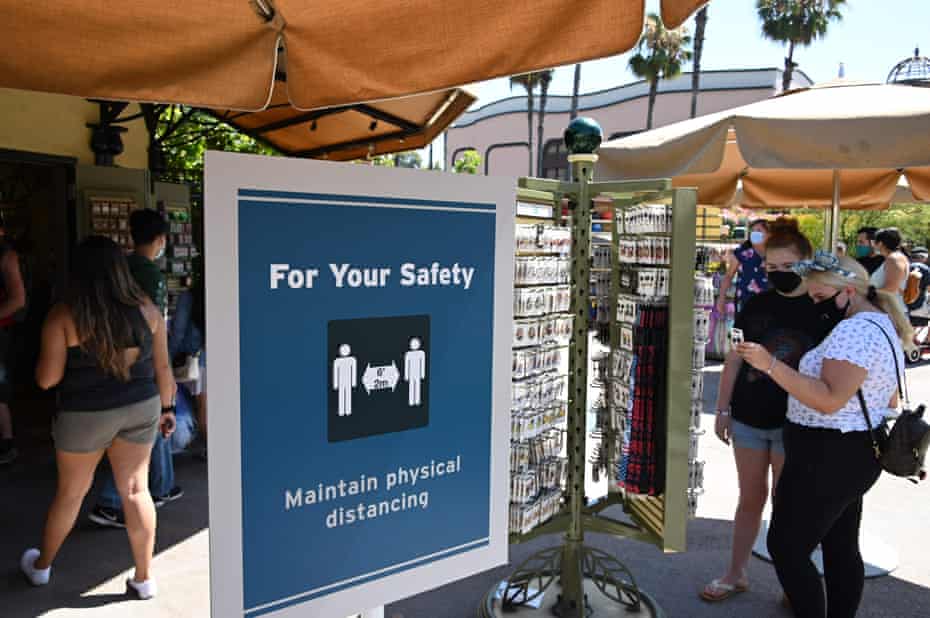
Despite all that, Brown says she’ll be back at the park as soon as possible – and she’ll be bringing her two-year-old daughter with her.
“I don’t think that [the pandemic] is going to mess with the magic. We’re still gonna enjoy walking down Main Street, buying a balloon,” she paused. “I hope I can still buy a balloon!”
Bachman is also worried about what will be missing when Disneyland reopens. He says workers have been told that they can’t give out “birthday buttons” – buttons that let all the other workers know to wish someone a happy birthday. It’s part of the magic of the park, he says – “especially with little kids, they’re like, ‘How do you know it’s my birthday?’”
“We’ve been told we can’t do that because we don’t want to be giving stuff out, people don’t want stuff that hasn’t been sanitized,” he said. “But the Disney magic will come back. It may not be there in the next three months, but maybe in six months or nine months – or a year. We know it’ll come back.”
